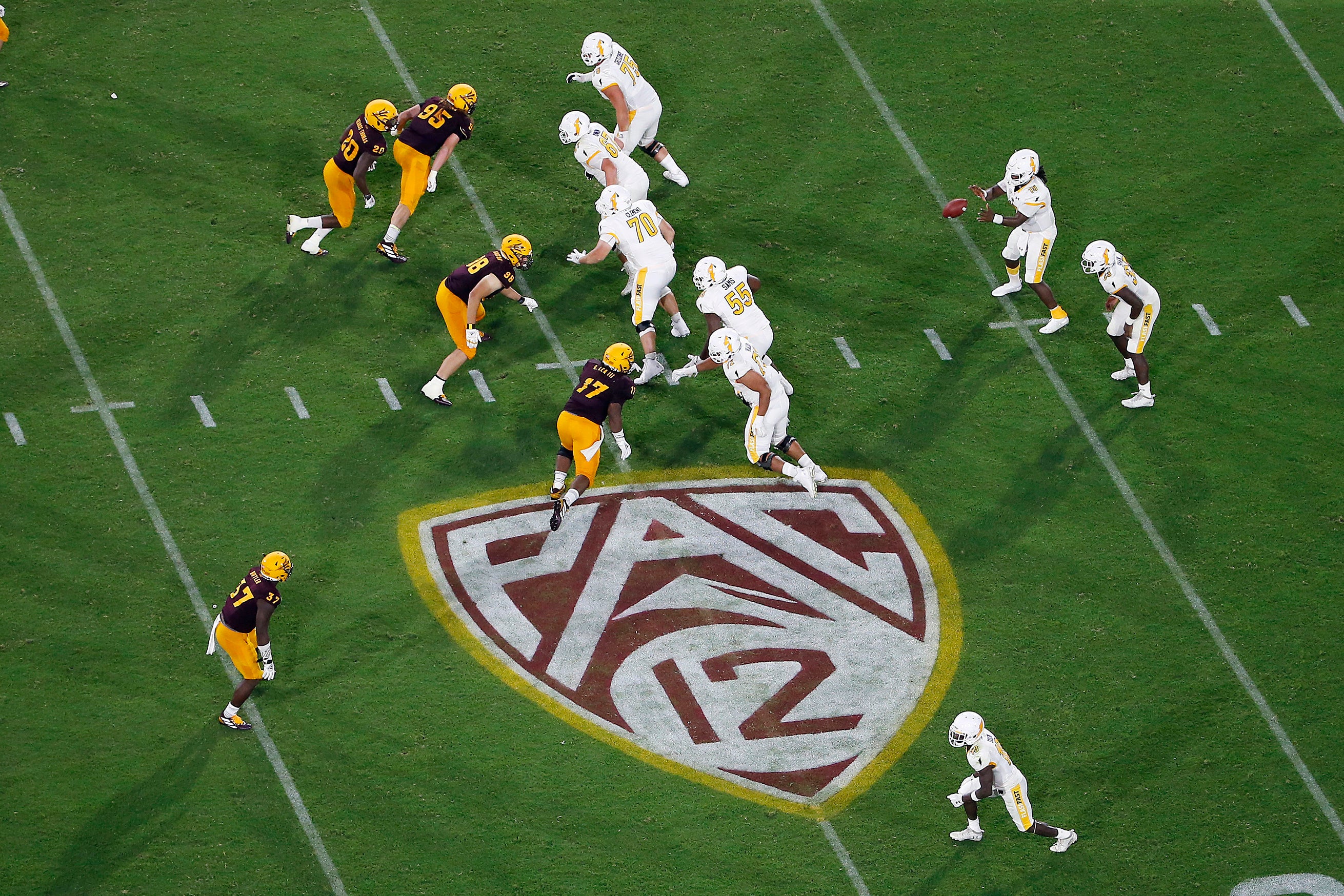Pac-12 football may be back, but not all the revenue will be
The return of football in the Pac-12 in November will bring some much needed relief to cash-strapped athletic departments trying to weather the coronavirus pandemic

Your support helps us to tell the story
From reproductive rights to climate change to Big Tech, The Independent is on the ground when the story is developing. Whether it's investigating the financials of Elon Musk's pro-Trump PAC or producing our latest documentary, 'The A Word', which shines a light on the American women fighting for reproductive rights, we know how important it is to parse out the facts from the messaging.
At such a critical moment in US history, we need reporters on the ground. Your donation allows us to keep sending journalists to speak to both sides of the story.
The Independent is trusted by Americans across the entire political spectrum. And unlike many other quality news outlets, we choose not to lock Americans out of our reporting and analysis with paywalls. We believe quality journalism should be available to everyone, paid for by those who can afford it.
Your support makes all the difference.The return of football isn't likely to make a dramatic dent in the losses athletic departments across the Pac-12 will ultimately incur because of the coronavirus pandemic
Faced with large budget shortfalls, most schools in the league have already resorted to layoffs, furloughs, and cutting some sports entirely.
At Utah, football coach Kyle Whittingham and basketball coach Larry Krystkowiak took salary cuts to help offset up to $60 million in projected losses. Athletic director Mark Harlan said the Utes are still dealing with “significant financial challenges.”
One reason: as of now, none of the Pac-12 football games will have fans in attendance. That said, any help — like television revenue — is welcomed.
“Obviously, we have a chance to have more revenue than maybe we would have thought of a few weeks ago. So we’re going to continue to adhere to our budget and into all the policies that we put in place to manage our way through this, knowing that there could be a light here at the end of the tunnel that we’ll have more revenue that we weren’t necessarily counting on,” Harlan said.
The pandemic shut down sports in March, including the NCAA basketball tournaments. With no March Madness, the NCAA was short $375 million in the money scheduled to be distributed to its member schools, which were already facing questions about enrollment levels and tuition shortfalls.
Following the cancellation of all spring sports, the league decided on Aug. 11 to postpone all fall and winter sports until after the first of next year.
But a deal with Quidel, a California-based diagnostic healthcare manufacturer, for a daily rapid-results coronavirus testing program helped put the football season — by far the biggest revenue generator in college sports — back on track.
The league will open a seven-game, conference-only football season on Nov. 7.
Arizona athletic director David Heeke insisted that discussions to restart athletics centered around athletes, and not budgets.
“Without fans, there is a tremendous challenge. We’re glad to be playing, glad to have the opportunity, but we are still significantly short on revenue and that’s going to be a challenge for us going forward as an organization,” Heeke said.
Arizona has estimated $60 million to $65 million in revenue losses. The Wildcats are looking at a 10% budget cut for their sports programs and a 15% cut for all administrative programs. The university also has implemented school-wide salary cuts and furloughs.
Oregon President Michael Schill, chairman of the Pac-12 CEO group, echoed that the return of football is by no means going to make up the shortfall.
“The losses that our schools are encountering — particularly in our athletic department —— are huge. The amount of money that will be paid as a result of going back to play is tiny in comparison to the losses," Schill said.
At California, the athletic department forecast as much as a $55 million deficit this fiscal year and had mapped out steps to mitigate the losses while still supporting athletes — including hiring and merit-pay freezes; voluntary pay cuts for coaches and administrators, and other budget cuts.
“Now that sports are on track to resume, there will be some relief. I want to emphasize that while I’m certainly cognizant of the financial implications of returning to competition, they did not play a role in the decision,” Cal athletic director Jim Knowlton said. “We had a plan to meet our budget targets with a $50-55 million loss, so any new revenue is going to help us offset any deficit. We must remain very careful with our expenses and be as conservative and efficient as possible this year.”
The most dramatic action was taken by Stanford, which is discontinuing 11 varsity sports programs at the end of the 2020-21 academic year, including men’s and women’s fencing, field hockey, lightweight rowing, men’s rowing, co-ed and women’s sailing, squash, synchronized swimming, men’s volleyball and wrestling. Stanford officials declined to comment for this story.
At Oregon State, the athletic department laid off nearly two dozen employees in June because of the hit the school was taking without football. Those employees won't likely be rehired, athletic director Scott Barnes said.
He said possible television revenue looked healthy, but it's still uncertain how it will all shake out.
“I’ll tell you this, that as it relates to television, we’re close to being able to max out with the games we're playing -- not quite there, but very close to the max for the ESPN/Fox dollars based on the schedule that we’re looking at," Barnes said. "Obviously, there’s all sorts of revenue gaps because we’re not going to have fans, we’re not going to have concessions, parking, donations. All that, I haven’t put a pencil to it.”
___
More AP college football: https://apnews.com/Collegefootball and https://twitter.com/AP_Top25